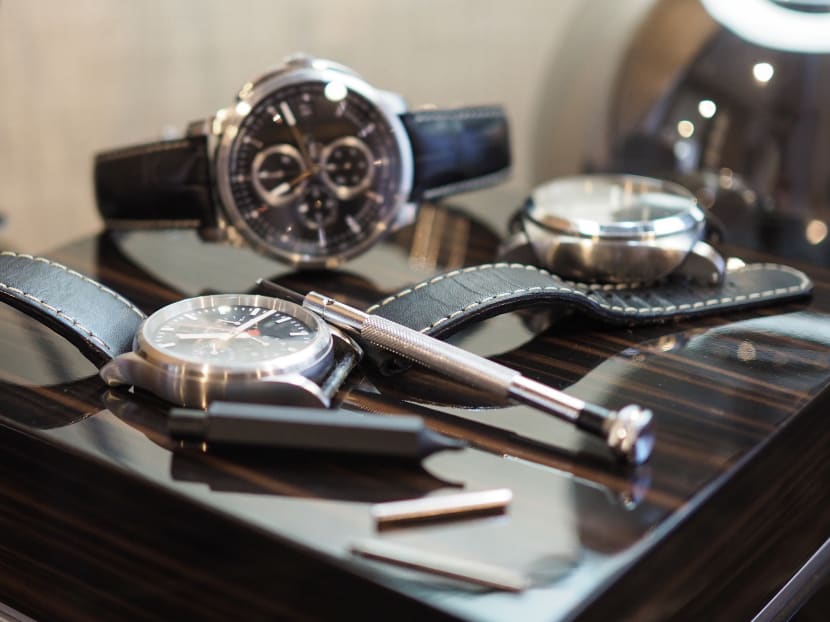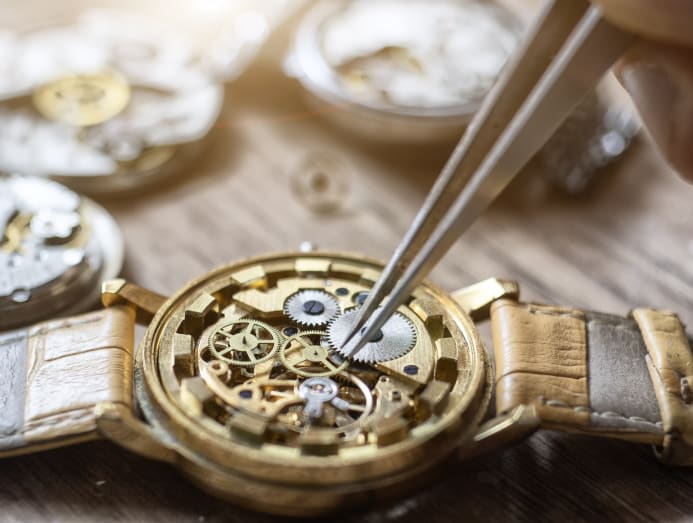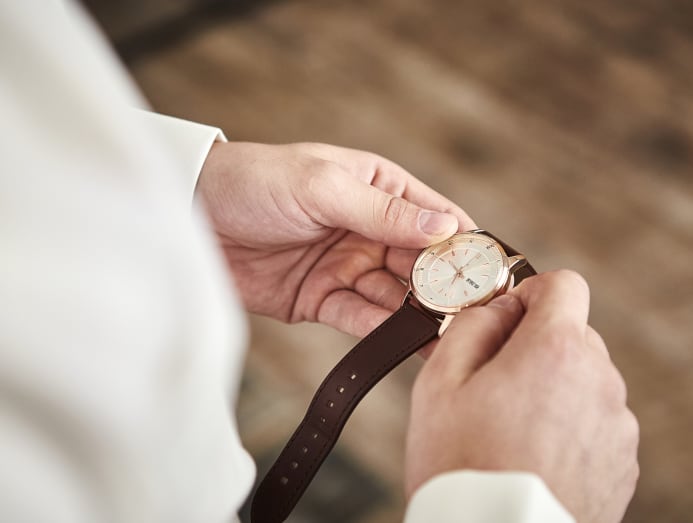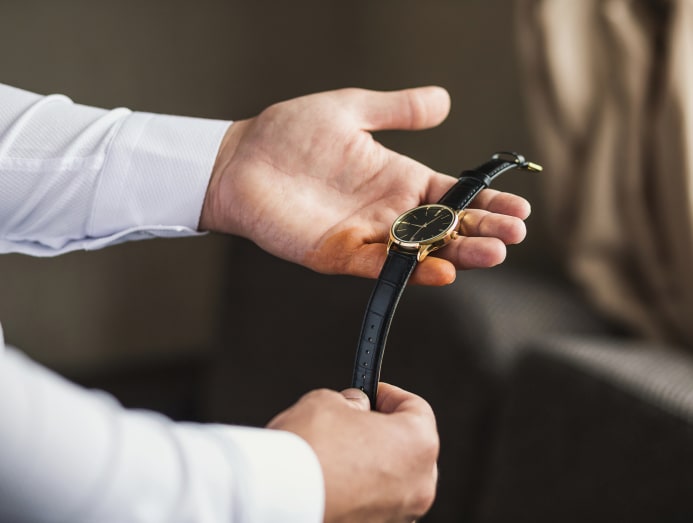How to care for your luxury watch: Why and when you need to send it for servicing
You might think your watch is working perfectly fine, but even so, there might be hidden problems inside. A watch expert explains why and also points out the more obvious signs that something is not quite right.

When should you service your luxury watch? (Photo: iStock)
You’ve put down a small fortune for a good watch and expect it to last a lifetime – or, if not, at least a very long time. To ensure this, it’s necessary to take good care of your prized wrist accessory – but this takes more than simply keeping it away from situations that may cause damage to it.
A mechanical watch is essentially a small, intricate piece of machinery, which means it requires regular maintenance for it to stay in working condition, like many other larger types of machinery.
You’ve probably been advised to send your watch in for servicing once every couple of years by the sales representative of the brand you bought it from, but have you actually heeded it? It’s not uncommon for this advice to go ignored, especially if one’s timepiece is not displaying any problems and doesn’t seem to require servicing.
But does it really mean that there’s nothing wrong with your watch even if it looks okay?
CNA Lifestyle got watch specialist Kenneth Tay, founder of watch servicing centre Salon De Temps, to explain why a watch needs servicing, as well as point out the signs that tell you when it needs to be sent in immediately.
DON’T WAIT UNTIL PROBLEMS SURFACE

A servicing session for your watch is kind of like a car tune-up, in which the parts inside get checked to see if they need fixing, cleaning or replacing.
Tay made the same comparison, specifically pointing out how the internal parts of watch will need regular oiling. “Watches are just like cars – the parts inside need to be lubricated to prevent rough grinding. If there's not enough grease or oil left (in the mechanism) over time, parts would wear out faster,” he explained.
Think of watch servicing as a preventative measure against damage that may arise in future.
Think of watch servicing as a preventative measure against damage that may arise in future. It’s also worth noting that problems discovered earlier may also be easier and less costly to fix, than when the extent of damage gets much worse later on.
“A complete overhaul, or full servicing, consists of a complete disassembly of the watch movement, cleaning of even the tiniest parts and a thorough inspection of every single part in the movement,” explained Tay.
Any part that needs fixing will be repaired. Then, the watch parts will be lubricated and reassembled. The final steps include a timing calibration to ensure accuracy, the closing of the case and a water-resistance test.
HOW OFTEN SHOULD A WATCH BE SERVICED?

Is it absolutely necessary to follow the time frame recommended by the brand from which you acquired your watch? It depends on a number of factors, which include the make and age of the watch, as well as the conditions under which it is being used and stored.
“If I feel that the timepiece doesn’t need to be serviced (after assessing it), I'll definitely tell my customers. Let’s say you haven’t been maintaining the timepiece for a long time though, be prepared to spend a bomb! There’ll likely be many worn-out parts that may not be possible to restore,” said Tay.
Quartz watches need maintenance too.
In general, he recommended servicing to be done once every two-and-a-half to three years for mechanical watches, regardless of how often they are worn.
“Quartz watches need maintenance, too. I suggest having the battery replaced once a year, whether the watch is being used often or not. Besides the annual battery change, a complete overhaul should be done every five years,” he shared.
WHEN YOUR WATCH NEEDS IMMEDIATE SERVICING

Needless to say, a watch needs a repair job immediately if it stops working. But are there any other signs that indicate servicing is urgently required even if it is still ticking?
“Yes, some common signs include intermittent stoppage of the movement and inaccurate time. If you notice that your watch has gone ahead of time, that is most likely caused by a magnetic field, and it needs to be fixed. Also, when you see any fogging or vapour inside of your watch, you should get it checked quickly as it’s not a good sign,” said Tay.
Exposure to magnetic forces can bring about a gain or loss of time in a watch, as they can magnetise running parts in the watch and cause them to stick together, resulting in the movement inaccuracy.
Many are unaware of how easy it is for their watch to come into close proximity with magnetic forces. They can come from many things used in our daily lives, such as a mobile phone, the clasp on a handbag, or even the electrical devices in our homes like speakers or the microwave.
Don’t shake your mechanical watch to keep the time going.
Fogging underneath the watch crystal is a sign of condensation, indicating that moisture has gotten inside the watch. This can be due to worn-out gaskets, or moisture seeping into the watch via the crown. Regardless of the reason, it’s best to get it checked out and fixed, as moisture within the watch can cause corrosion in the movement over time.
When there’s rattling coming from inside the watch, it is likely due to parts that may have come loose. Do not shake the watch or wind the crown, as doing either may cause further damage – send it to the pros for a check, pronto.
HOW YOU CAN PREVENT DAMAGE

Besides servicing your watch at regular intervals, Tay told CNA Lifestyle that there are some dos and don’ts that can help spare your watch from damage as well as your wallet from a big repair bill.
“For one, don’t shake your mechanical watch to keep the time going. What you should do is to simply wind up the mechanism via the crown to store energy inside it. It is a common misconception that the former should be done to a mechanical watch,” he said.
Secondly, simply try not to be careless when handling your watch. “If you drop your watch, there’s a high chance that internal parts will be broken even if you don't see any external damage,” he added.
Finally, do not keep your watches in humid areas, such as in or near the bathroom. Tay explained that watches need to be serviced more often in humid climates like that of Singapore, in comparison to other countries where there is less humidity, which is why you shouldn’t exacerbate the situation by exposing it to an environment with even more moisture.







